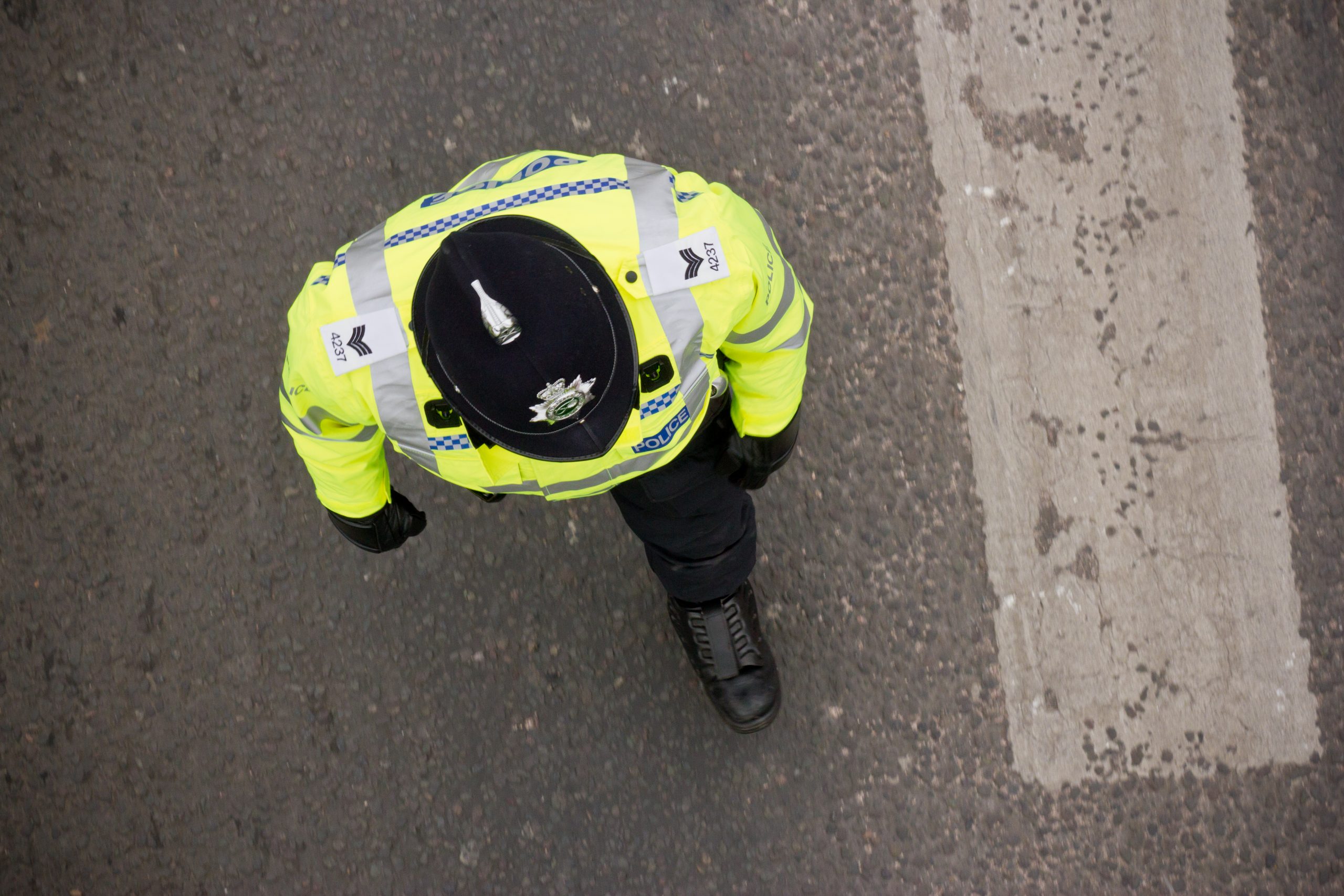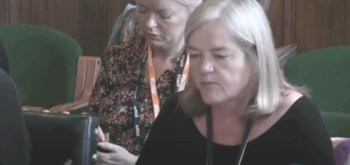Earlier this month defence lawyers called on its members to cite examples of ‘outrageous non-charging decisions where in the past on any sensible basis someone would have been put before the court’. The request – which appeared on the Criminal Law Solicitors Association’s email group – was made following an article originally published by Criminal Law & Justice by Jon Robins (reproduced below) on the apparent collapse in police station work reported by defence lawyers. We were asked to make sure that any details couldn’t identify any parties.
Examples included:
‘FP [Fixed Penalty] for running down road in dodgy red light area with a small machete. I guess it would have been a caution if it was a big machete.’
‘Recently got a caution for a chap for ABH. Argued with a woman in a taxi queue ended up elbowing her in the face. She fell and was knocked out when she hit the pavement. She didn’t regain consciousness until she after she arrived at A&E sometime later. All on CCTV. Advised my client to buy a lottery ticket on the way home.’
‘A section 18 [wounding with intent] over Xmas period. An offence carrying life….. and a very grateful defendant being told by OIC [officer in charge] that his Sarge had authorised a caution.’
‘The new assistant police commissioner driving over Humber Bridge using mobile phone [as reported in the paper]. Given a warning. Anyone ever heard of that before?’
‘Heard about one this morning. Drug addict gave his drug addict girlfriend some heroin. She died of an overdose. He was cautioned for supplying class A drugs.’
___________________________
‘All defence lawyers welcome alternative non-court disposals, where just and appropriate, and we’ll always fight for such on behalf of their clients,’ comments Robin Murray, vice-chair of the CLSA. ‘However many of us have examples of cautions and fixed penalties being imposed which are not appropriate for the severity of the offence – and where previously these would be charged and brought before the courts.’
‘The courtrooms are no longer busy. The deep suspicion is that this has less to do with crime trends and demographics and more to do with the under-resourcing of the police and CPS.’ Less prosecutions means less public cost for the Government ‘but there are social consequences for this’, Murray adds.
- The Office for National Statistics recently reported that the ‘rate of reduction’ in crime might overstate the decrease, according to a BBC report. The ONS compared categories of crimes and found police-recorded offences ‘had fallen by 33% over the previous five years, while data from the Crime Survey of England and Wales suggested a decline of 17%’. The ONS also published crime figures (for 12 months up to end of September 2012) showing ‘continued falls in virtually every category’
- ONS statistician John Flatley told the BBC that the bigger falls in police-recorded crimes might be down to pressures to meet crime reduction targets. ‘It’s more the culture and informal pressure of having targets and expectations,’ he said. Other reasons for under-recording were more low-level crimes being dealt with informally and outside the formal crime-recording system.
- The British Retail Consortium’s survey showed an increase of over 15% in the cost of retail crime alongside a drop in the proportion of crime reported by retailers to the police from 48% to 16%.
- Pic by bixentro
‘If only 16% of shoplifting cases are reported because stores feel nothing will happen to offender – and why would they waste further resources in bringing offences to the attention of the police?’ comments the CLSA’s Robin Murray. ‘This leads to more offending and, we the ordinary shoppers, pay the price in what we pay as a premium added by the stores to the cost of what we pay when we purchase goods from the stores.’
_____________________________________________________
What’s going on down the station?
A version of this article first appeared in Criminal Law & Justice in October last year.
Life isn’t easy for many defence solicitors eeking out a living from a frozen legal aid fund with the prospect of price competitive tendering on the horizon and, on top of other woes, a reported drying up of what is regarded as the lifeblood for the profession: police station work.
‘The consistent message over the last 12 months is that police station work has been dire,’ comments Andrew Keogh, of the Criminal Law Solicitors Association.
The solicitor runs the Crimeline training service and lectures practitioners up and down the country. Firms are reporting volume drop of between 20 and 25%, he reckons. His opening ‘icebreaker’ question for delegates is as to whether they are busy – the response is rarely positive.
‘The police station work totally dried up,’ reports Kim Evans, a duty solicitor in Hastings, East Sussex. She stopped doing police station work recently after 10 years. ‘I worked for years night after night – frankly often almost to the point of nervous breakdown. The work pattern seemed to go from being totally flat out to nothing. For reasons that weren’t apparent and which I never got to the bottom of, the work largely ran out,’ says Evans.
One clue to this marked drop-off in work is the increasing use out-of-court settlements. ‘“Dixon of Dock Green” justice is used in one in eight in the evening crimes,’ read a recent headline in the Daily Telegraph. According to a joint criminal justice inspection report, which the Telegraph drew upon, some 12% of all cases handled by the police in 2011 were resolved with some form of informal ticking off or other informal resolution compared with just one in 200 in 2008. Up to a fifth may have been an inappropriate way of ending the case, the watchdogs said.
No stomach for a fight
Restorative justice – from the police using ‘informal resolutions’, ‘common sense’ and out-of-court conclusions through to victims meeting offenders face to face – was being ‘used effectively’ in all areas of the criminal justice system; but the report’s authors said ‘patchy take-up and inconsistent application’ meant that not all victims, offenders and communities had the benefit of it.
‘In my personal view – and having done this job for 30 years – I think this is the first time the CPS haven’t had the stomach for a fight,’ comments Mike Jones, chairman of the Criminal Law Solicitors Association and partner at Grayson Willis Bennett LLP. His firm is one of the largest crime-only providers in South Yorkshire with nine solicitors across two offices and half a dozen non-solicitor legal advisers. ‘We are holding our market share but the market has diminished dramatically in terms of volumes,’ he adds.
Julian Berg, CLSA honorary secretary, has just relocated from the West Midlands to Liskeard in Cornwall where he is a consultant with the defence firm Cox Burley. ‘The police down here have cut as much they can and are expected to make yet more cuts,’ he reports. ‘Now they are really looking at ways of saving as much money as possible. It is cheaper to do restorative justice. I believe that there are cases where that seems not necessarily the right way to go about things.’
The criminal justice inspection report reckons that police records show that use of informal resolutions had shot up from 0.5% to 12% of all case disposals between 2008 and 2011. Although that increase corresponds with a fall in other forms of out-of-court penalties such as cautions or on the spot fines, which accounted for 32% of cases in 2011 compared with 42 per cent in 2008.
‘I cannot understand why when you have the clearest CCTV footage of a man knocking another man to the floor and breaking his jaw, why that man is not charged with something?’ Mike Jones comments. Six months ago, he would have said that the only things ‘keeping the court going’ were domestic violence cases and prosecutions by the police for failing to provide drivers details under the Road Traffic Act, section 172. ‘The number of domestic violence cases has now fallen off a cliff,’ he says. ‘Sheffield is no more law-abiding now than it was in 1978 when I started in the job – but you simply would not believe it is saw the court corridor.’
A 2011 joint inspection (Exercising Discretion: The Gateway to Justice) described a huge variation in how police forces dealt with out-of-court disposals and in the numbers of cases they dealt with in this way – ranging across England and Wales from 26% to 49% of all offences brought to justice. It also found that restorative justice and community resolution for adult offenders was only used in three of five forces in that inspection. ‘This means that in the other two forces the only means for an officer to deal with the incident is through the formal processes of arresting or reporting the offender for summons, issuing a formal out-of-court disposal, or alternatively taking no further action. This has been said to create a “postcode lottery” in that an offender’s charge.’
According to a report by Her Majesty’s Inspectorate of Constabulary, a simple case that went to court featured around 1,000 steps (including form-filling) and seven stages where information is passed between criminal justice agencies. Whereas informal resolutions were ‘usually conducted outside the police custody environment, and concluded at the scene of the incident’ and presented ‘opportunities to reduce police bureaucracy’.
Lily-livered liberalism
Kim Evans, a detective with the Metropolitan Police prior to becoming a defence lawyer, predicts tensions between the enthusiasm of the police for restorative justice and a public antipathy for ‘lily livered liberalism’ (as one member of the public describes restorative justice in the study that accompanied the joint criminal justice inspection report). ‘When police and crime commissioners are appointed, there is a potential and obvious conflict between the new PCCs and the police. The police want to save some money by using other methods of case resolution and then the communities are going to be telling the PCCs that what is most important to them is cutting down on crime. There is a conflict of interest there.’ Evans didn’t notice a creeping rise of alternative, out of court resolutions by police in Hastings – ‘but then again as a defence lawyer, I wouldn’t because by definition they aren’t the cases I would pick up,’ she adds.
Nonetheless the trend appears to be borne out by the Legal Service Commission own statistics. ‘Certainly in the last three years there has been a marked downward trend,’ comments John Binks, solicitor and former regional director at the LSC.
In 2005/2006 there were 617,000 police station attendance cases and 583,000 representation orders in the Magistrates Court and last year 2011/ 2012 643,000 police station cases but 399,000 representation orders. ‘That is a significant drop,’ he says.
According to Binks, there are two main reasons for the drop. ‘Some six years ago the LSC assumed direct management over the process of granting legal aid in the Magistrate’s Court, and reintroduced means testing. From then on in, there has been tighter control over the granting of representation orders.’ The second reason is that the police are charging less people. ‘It is a combination of using alternative methods of dealing in the police station for those that admit guilt, and the police and CPS wanting to make sure that they have got a strong case before they charge, so as to reduce the number of cases withdrawn after the start of proceedings for lack of evidence.’







